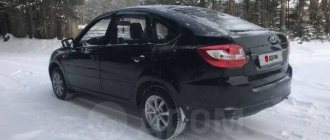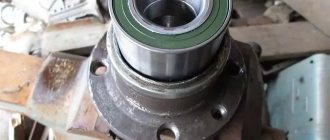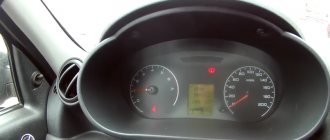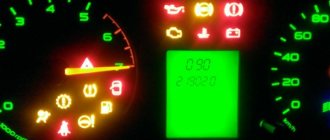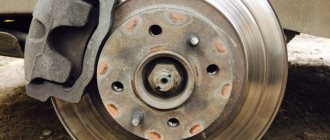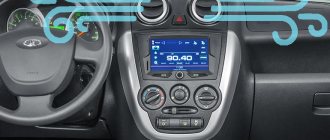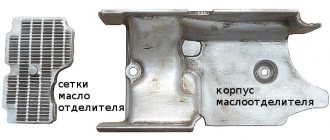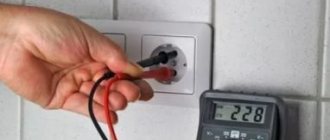Creaks are present even in the basic configurations of the Lada Granta Liftback, despite being equipped with noise and vibration insulation. This causes significant discomfort to the driver while driving.
Eliminating squeaks is not an easy, labor-intensive, and costly procedure. Not all owners willingly agree to do this in a service station. In order to save money, car enthusiasts practice doing noise reduction with their own hands. Read below about how to do this on a Lada Granta Liftback.
What material is used to eliminate squeaks?
- bitoplast;
- anti-creak
Few owners know the use of each material; they are often considered identical, but this is not so.
Anti-creak is often called “madeline”, after the same name of the component included in the main composition. Madeline is a thin material, not intended for noise and vibration insulation. Suitable only for eliminating squeaks.
Bitoplast - also known as “Shumka”, has a thick fiber structure, is used primarily to reduce noise and vibration levels. It is not used as an anti-skripin. Although they sell it in stores as a universal remedy, which is fundamentally wrong.
Let's consider the materials
It is better to familiarize yourself with the properties of the materials used in advance in order to avoid mistakes and achieve the best result:
- The instructions instruct to apply vibration-absorbing materials – abbreviated as “vibro” – directly to the metal parts of the car throughout the body. Since the power unit and transmission, as well as suspension elements, plus uneven road surfaces and the resulting air resistance cause body parts to vibrate, creak, and make other unpleasant sounds for the owner’s hearing
- To understand how “vibration” absorbs such strong vibrations, let us recall the basics of physics, which relate to internal friction, in which one energy is converted into another (in our case, vibrations into heat)
- Using the recommended materials we provide in the article, you can achieve the best result
- All materials already have a mounting layer that simplifies their application to metal surfaces
- Plus, these materials have sealing properties, they create additional protection of the metal from corrosion
- All “vibro” materials are made on the basis of mastic or bitumen; they may or may not have a layer of aluminum foil.
Note: Regarding the Bimast series materials, they have both layers - mastic and bitumen.
- ZPMs are designed to absorb noise that is transmitted through the air; the main feature of this category of materials is a porous base; they also come with or without foil coating
Note: It is recommended to use such materials in areas directly near the noise source. It is worth noting another important property of this group of materials – low thermal conductivity, so they are suitable for thermal insulation.
- Soundproofing materials, excellent sound insulation for grants and other cars from noise penetrating from outside, they reflect sound in the opposite direction, an impenetrable barrier that stands in the way of noise propagation
Note: It is better to use such materials as a second layer, on top of vibration insulation, best used on the outside, underbody, wheel arches, engine compartment.
- Anti-squeak gasket materials, used to eliminate squeaks, are used for gluing skin joints, dashboard elements (see Soundproofing a car's dashboard is always necessary) and other rubbing parts
Eliminating squeaks in the cabin
Upper side trims
- Carefully pry up the plastic cover and remove it.
- We glue several strips of madeline onto the metal stand.
- We fix the laid electrical wiring with insulation.
- We press the overlay. If you don’t want to glue it to metal, apply Madeleine to plastic.
By analogy, we remove the squeak on the right pillar.
Torpedo in places where fasteners are fixed
On the left and right sides, the torpedo is pressed with two screws under a cross-shaped bit. The “noise reduction” process is as follows: unscrew the screw, place a plastic washer (ring) under the support. The height should be in the range of 0.3 - 0.5 mm. Exceeding the height does not guarantee a tight fit of the torpedo in its normal place.
We repeat a similar procedure on the torpedo mount on the right side.
The front part of the deflector grille, radio, stove heater speed controller
The procedure involves removing the plastic trim from the front of the torpedo and gluing Madeleine strips around the perimeter. In this case, we do not touch the inside of the panel, where it is necessary to additionally glue the bitoplast.
We do not recommend fitting it “with glue”, since if removal is necessary, the structure will not be removable.
Internal “stuffing” under the dashboard
To remove extraneous noise, you will need to completely dismantle the front instrument panel, remove the wiring blocks, disconnect the stove heater control levers, and deflectors.
- After the panel is removed, we proceed to pasting the back of the torpedo with bitoplast, wrapping the levers of the drive mechanisms in an insulating layer.
- We put the electrical wiring in a fireproof corrugation and tighten it with clamps.
- We assemble the structure in reverse order.
Door card
We disassemble the door trim if noise and vibration insulation measures were not taken when installing the acoustics. If the work was carried out at a service station, then there will be no such problem.
We glue madeline in the form of strips around the perimeter of fixing the acoustics. If necessary, cut out strips along the outer perimeter of the door card.
Trunk lock fixing shackle
There is only one recommendation - replace the bow with a new one, since this is a manufacturing defect.
Side pads made of plastic
- Use a plastic object to pry up the plastic casing and remove it.
- We glue anti-squeak strips to the inside around the perimeter.
- We install it in its original place.
If the lining is clearly deformed, we replace it with a new one, since gluing it on Madeleine will not give a positive result.
Upper luggage compartment
Creaking and vibration of the shelf are eliminated by gluing bitoplast strips on the inside. Lubricate the fastening points on the screws with silicone grease.
Lada Granta Liftback Silver Bullet › Logbook › Soundproofing doors, cheap and cheerful
I think every car owner would like to increase the comfort of his iron friend, to create an isolated and calm little world in the cabin. At the same time, few people want to spend serious amounts of money, especially if it is a budget car. Acoustic comfort is one of the most important factors. The simplest, most effective and not too expensive way to improve the situation is soundproofing doors. It is through the doors that most of the noise penetrates into the interior; work on the mechanical adjustment of this part of the body is quite simple and does not require disassembling most of the interior - only the door cards are removed, and as a bonus to silence we get a significantly improved sound of the audio system even with standard components. In general, it is from the doors that you should start soundproofing your iron friend.
Reviews
| № | Positive |
| 1. | Vitaly: a year has already passed since the purchase of Granta, I spent the night on the street in winter, there is no creaking. The dashboard is quiet. |
| 2. | Gennady: There are no complaints about the torpedo, it doesn’t make noise, it doesn’t creak. I installed acoustics at the service center, apparently it was a hack job. Two months later, the door card on the left side began to make noise. I put Madeline on it and it doesn’t make any noise. |
| 3. | Vasily: I heard from other owners that the panel creaks. I can’t confirm that it fits evenly and is not deformed. |
| 4. | Kirill: when buying a car, the dealership recommended a torpedo care product. I apply it systematically, cover it in the sun, there is no vibration. |
| 5. | Vladimir: after buying the car, I immediately retightened the instrument panel and lubricated it with silicone. No complaints, no noise, no knocking. |
| Negative | |
| 1. | Victor: No matter what I did with the torpedo, it’s constantly making noise. In the spring I plan to completely disassemble and glue it with rubber. Factory quality is poor. |
| 2. | Ignat: drove it one winter, after which the tidy began to rattle. I disassembled it, put in plastic inserts, and the extraneous sounds were eliminated. |
| 3. | Ivan: negative review about the factory assembly of the Lada Granta Liftback. Already in the third month of use, the panel began to rattle. |
Conclusion The human factor is present everywhere, including with the assembly of a torpedo on the Lada Granta Liftback. It will not be difficult for the owner to tighten the plastic fastening points with a screwdriver within half an hour.
It is important to follow the manufacturer's recommendations regarding protection from ultraviolet rays. Special rolls of foil are available for sale for this purpose.
In most cases, panel deformation is caused by violation of operating rules by the owner of the equipment.
| Video — LADA GRANTA LIFTBACK (creaking from the clutch pedal) |
| Video - Place of creaking in the trunk of Granta Liftback |
Lada Granta Standard › Logbook › Soundproofing Grants with torpedo removal Part 1.
And so I found some free time to describe a little the process of soundproofing my car. Let me remind you that the car was picked up from the dealer and went straight to my bay to install additional equipment. On the way I had to stop by and register it because... the car stood up for a long time and for more than half of the installation period (about 20-25 days in total) could not be driven - they took it apart well.
Along with the installation of the security complex, noise insulation, music installation, a DVR, and various other additions were made, which I will try to describe in the coming posts.
And so noise. It all started with disassembling the interior. They took it apart thoroughly and down to the bare metal. There were no unforeseen situations with disassembling the interior; the car is not complicated in this regard.
With the choice of the sound insulation material itself, everything was simple for us; in St. Petersburg there is such a brand as STP, it is easy to get, convenient to work with, and there is always material available for any task.
I'll start with the trunk lid. There was no need to disassemble it; in the factory configuration there is simply nothing there except a cambric, which is placed on the sharp edge of the metal so as not to cut your hand when closing the trunk. Before soundproofing, the lid is very light, which allows it to rise well when opened with the trunk tarsion bars in the middle position.
Along the way, we purchase a trunk lid trim for the grant with an emergency sign and make noise with an STP AERO vibrator, followed by Biplast.
The noise inside the lid is not very convenient, you have to push it. It is best to press the Shumka with a roller, which is sold at the same STP or together with the Shumka. In general, I had experience working with a machine without a roller - I wiped out all my hands and couldn’t work with them for 5 days - you shouldn’t skimp on this thing.
We install the rear view camera in the lock cylinder and begin to assemble
We install the trunk lid trim. Installation is simple, there is nothing to describe here.
With all this stuff installed, the lid became so heavy that it could barely hold its weight in the tightest position of the trunk torsion bar - we decided to install gas stops. There are no questions with them either, 2 bolts on each and off you go. We loosen the tarsion bar to the middle position, the trunk rises by itself when you press a button in the cabin.
Don’t pay attention, not all the photos were taken during the process; for the sake of general understanding, I took them after.
Source
Soundproofing panel/dashboard Grants
| Probably all owners of LADA Granta have noticed that the interior of the car begins to fill with crickets over time, and the dashboard is no exception. The reason is poor build quality and materials (cheap plastic). To get rid of crickets for a long time, it is recommended to soundproof the Granta panel , and the advantage of this method is that it does not need to be removed for this. |
There can be many sources of rattling and squeaking in dashboards, let's look at the most common ones:
The radio/radio plug is rattling . Solution: use anti-creak or sealant.
The outside air (recirculation) control cable rattles It rests against the airbag plug and rings from engine vibration. Solution: Place a piece of yellow double-sided tape at the point where the shell and the “beard” come into contact. Secure the cable to the windshield defogger duct with a black tie. Or wrap the cable in anti-creaking material.
To prevent the car from squeaking
Today there are a great many options for dealing with unpleasant noises and grinding noises inside the car. However, there are several proven methods, the use of which for a long time guarantees getting rid of unpleasant background sounds and bringing long-awaited silence to the interior of your car. To do this you will need:
- Self-adhesive. Available on a one-sided sticky base and allows you to quickly remove panel squeaks. After peeling off, it may leave a sticky residue on the surface.
- Silicone Grease. Available in aerosol form. It dampens any squeaks well. Easy to use and allows you to cover parts even in hard-to-reach places.
- Rubber compressor. It is also created on the basis of silicone. It is highly effective, but attracts dust and gets dirty.
- Mounting foam. Used to increase the rigidity of thin plastic parts. A special sealant based on foam rubber and polyesters with an adhesive layer. Durable and durable.
- Velcro. Hook and loop system. Reliable and easy to use. They have weight restrictions.
- Fungi. They are presented in the form of a plate with mushroom-like outgrowths, which, when squeezed, are tightly fastened together, preventing rubbing parts or panels from rattling and creaking. Reusable, can be reused.
- Foam rubber. Used for internal sealing of parts and sound insulation.

